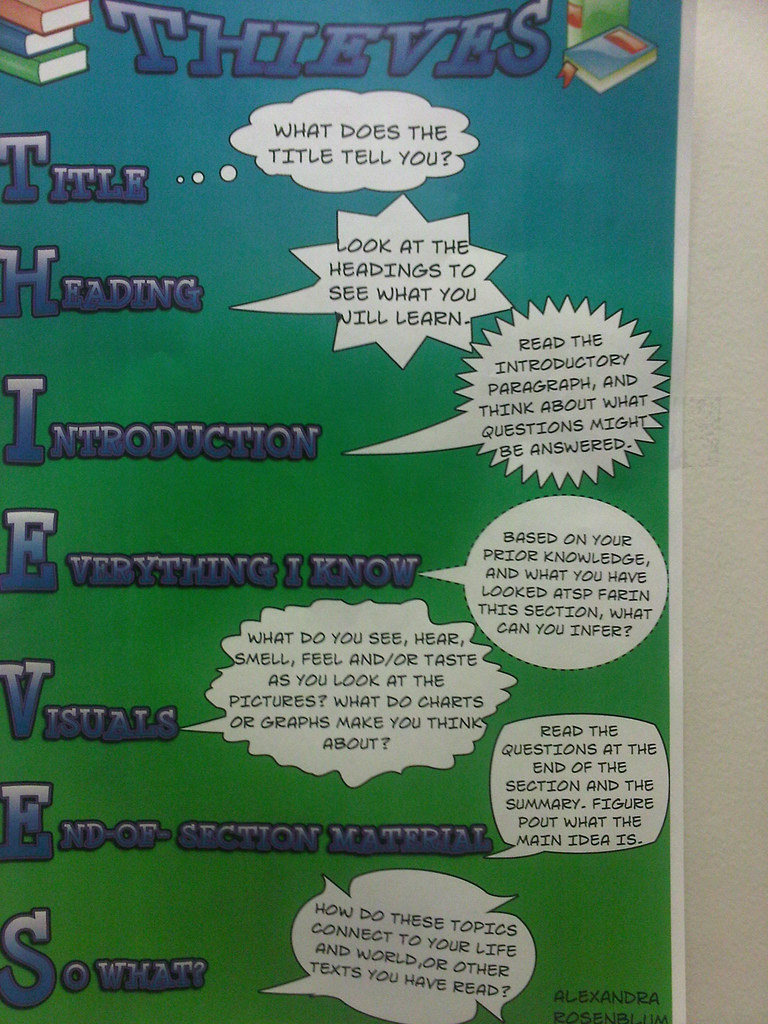More Active Reading: How to Read a Textbook Chapter
As an exemplar to the class, I “actively read” a scholarly essay: I wrote a short phrase next to every paragraph in the essay, and also filled in each of the worksheets. I then called attention to this in class and posted it to their Blackboard.
The next weekend, while supervising a local chess tournament, I came upon a kind of “active reading” poster in the middle-school library (Flickr):

This pretty much exactly corresponds to what I tell students about how to read the chapters from their textbook:
- Read the chapter’s introductory paragraph. List the keywords in the margin of that paragraph.
- Read the major headings (“Jeremiah and the Deuteronomists”; turn them into questions (“What do the Deuteronomists have to do with Jeremiah?").
- Look at the graphics: photographs, tables, timelines, maps. What do they make you think of? What questions do they make you ask? Write these in the margins of the chapter’s first page.
- Ask yourself: What sorts of things do you already know about the topics coming up in this exercise?
- Read the concluding paragraph and any study questions or glossaries at the end of the chapter. Plan to search out the answers to these as you read the chapter.
- Read one (1) major section in the chapter. For each paragraph, jot the main points into the margin, in your own words. At the end of the section, describe aloud what that section communicated to you. Repeat this for each section. This should take several sittings, probably one sitting for each major section.
- Bring this chapter into conversation with your life. What difference does this information make? How does it challenge things you already knew or believed? How does it help answer or solve questions you have had in the past? What does it make you want to try to discover next?
This may seem time-consuming, but in practice it is an incredible time saver: with interactive reading, you can read the chapter once instead of several times, because you retain the content at a much higher rate than through passive reading. Also, by breaking the reading up over several sittings, the subject matter can “percolate” for you, making unexpected connections to your other studies or activities.
Students, do you already do any of these kinds of things when reading? Profs, do you offer any kind of guidance or instruction in active reading?
[More Active Reading: How to Read a Textbook Chapter was written by G. Brooke Lester for Anumma.com and was originally posted on 2011/03/18. Except as noted, it is © 2011 G. Brooke Lester and licensed for re-use only under CC BY-NC-ND 3.0.]
